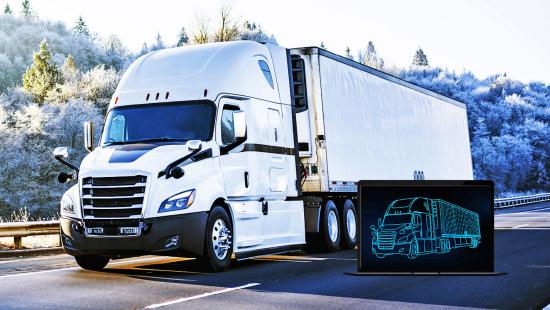It is incredibly useful to have a clear idea of where your goods and shipments are located in-transit and know when they will arrive at their destination. So, it’s no surprise that real-time transportation visibility continually shows up in surveys of supply chain professionals as the topic or technology with the highest importance. Nevertheless, it is debatable whether a receiving frequent updates of the exact ETA of a shipment that is not changing is what you need to run your business more effectively. Wouldn’t it be more effective to intelligently combine different types of in-transit shipment data to create clear insights and highlight where you should take action to avoid disruptions where necessary?
From ETA data to supply chain insights
Can a shipper or forwarder outperform its competitors if it has ETA data? Are these the data that make the real difference for customers? You might be tempted to answer 'yes', simply because this information looks like what consumers are looking for. Yet the real answer to this question is more nuanced. Having a regularly refreshed ETA for an ocean container adds little value if you cannot also use that data to improve delivery to the warehouse or customer. What's more, your customers and supply chain partners will benefit from receiving more information about the shipment than just an ETA (e.g., knowing the location, status (including customs clearance information), or temperature (if required). For the entire transport process to function properly these data should also be easily available to your customers and partners with automated integrations and exception alerts. Your Transport Management System (TMS) is an ideal platform for aggregating data from different corners of your supply chain and turning it into chain insights and actions for all stakeholders.
What kind of insights are you looking for?
What added value do the data from your supply chain bring to your, or your customers’, processes? The value is potentially huge. You can schedule an action yourself based on the expected arrival time of an item or a consignment of items. You can also forward these data to your customers. For example, suppose a retailer has planned a campaign to sell washing machines at a discount. Ahead of time, it can purchase media advertising and prepare the stores. However, there is an obvious 'but' in this story. The goods must actually arrive on time,nd having a stream of ETA data doesn't automatically ensure reliable arrival times; this also requires a system with the intelligence and data to calculate when an ETA is at risk prior to a disruption occuring, which allows time for pre-emptive action to be taken to keep the shipments on-time.
Do you have standard data definitions?
Are ocean container ETA data enough to create 'visibility' in the supply chain? That’s the question. Is it clear to all parties involved what the ocean container ETA data refer to ? Is it the moment a ship arrives in port? Is it the unloaded time, the moment customs documents are completed, or the time when the carrier can pick up a container? Having clear definitions of the data, and what they mean, is essential for all parties to utilize the information to ensure operations continue to run smoothly. This is especially true when sharing data across different systems with different data models.
Concentrating data flows in a TMS
Companies that want to create a clear picture of the supply chain, and even communicate this picture to their customers can benefit more by combining real-time visibility along with an effective TMS.
Not only does this allow you to concentrate all the data flows associated with a shipment; it also makes it possible to add some context to the data, like the meaning of the ETA data for any particular transportation leg . The TMS converts this into usable information and can intelligently prompt the various parties to take action if needed. In addition, a TMS gives you access to all the other - often very important – information/functions required in transportation, including; customs documents, contracts, rates, routing guides, optimization/planning, freight settlement, and reporting/analytics. As a supply chain practitioner you know the consequences of a delay for your planned action, or for the entire inbound flow of goods. If a particular container is delayed, then you know how to change gear to minimize the damage in your chain. Taking a proactive approach demands a broader view of the supply chain than simply ETA only visibility can offer.
Do you have any questions. or would you like a chat about how this can be set up in the best possible way for your company?

TMS Buyers Guide
Explore the comprehensive guide to select the ideal Transportation Management System for enterprise shippers.

Transportation Management Solutions
Global Transportation Technology to Strengthen Your Supply Chain



